 |
Convert DAT to MP3
|
Total Audio MP3 Converter converts DAT to MP3. The software is an ALL-IN-ONE
audio converter that supports more than 150 audio and video files, and supports
batch conversion.
- Free Download Total Audio MP3 Converter
- Install the Program by Step-by-step Instructions
- Launch Total Audio MP3 Converter by Clicking Start -> All Programs
-> Total Audio MP3 Converter -> Total Audio MP3 Converter
- Choose DAT Files
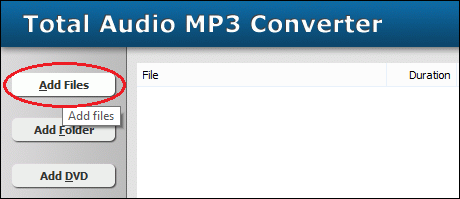
Click "Add Files" button to choose DAT files and add them
to conversion list.
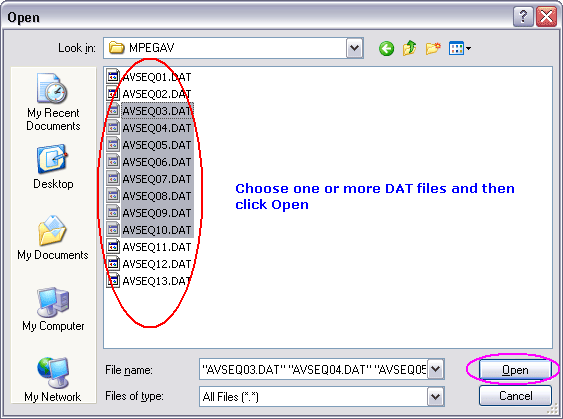
Choose one or more DAT files you want to convert and then click Open.
- Choose "to MP3"
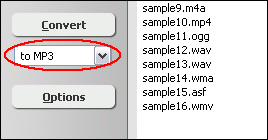
- Convert DAT to MP3
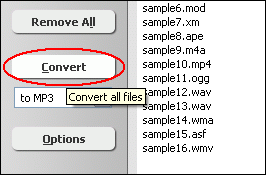
Click "Convert" to convert DAT files to MP3 format.
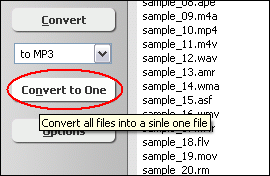
You can also click "Convert to One" to convert and combine/join/merge
all DAT files to one MP3.
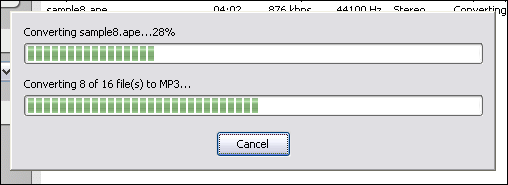
The software is converting DAT files to MP3 format.
- Play & Browse
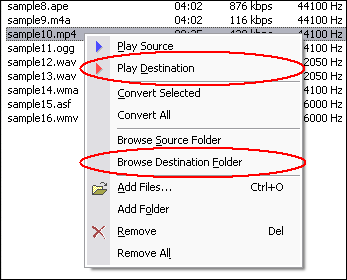
Right-click converted item and choose "Play Destination" to play
the destination file, choose "Browse Destination Folder" to open
Windows Explorer to browse the destination file.
- Done
Top
What is DAT?
Video CD (VCD) MPEG-1 movie file. Overall picture quality is intended to be comparable
to VHS video. Poorly compressed VCD video can sometimes be lower quality than
VHS video, but VCD exhibits block artifacts rather than analog noise, like VHS
does, and does not deteriorate further with each use.
352x240 (or SIF) resolution was chosen because it is half the vertical, and
half the horizontal resolution of NTSC video. 352x288 is similarly one quarter
PAL/SECAM resolution. This approximates the (overall) resolution of an analog
VHS tape, which, although it has double the number of (vertical) scan lines, has
a much lower horizontal resolution.
VCD video is mostly compatible with the DVD-Video standard, except for any
video encoded at 23.976 frames per second, which must use 3:2 pulldown.
What is MP3?
MPEG-1 Audio Layer 3, more commonly referred to as MP3, is a digital audio encoding
format using a form of lossy data compression. It is a common audio format for
consumer audio storage, as well as a de facto standard encoding for the transfer
and playback of music on digital audio players. MP3's use of a lossy compression
algorithm is designed to greatly reduce the amount of data required to represent
the audio recording and still sound like a faithful reproduction of the original
uncompressed audio for most listeners, but is not considered high fidelity audio
by audiophiles. An MP3 file that is created using the mid-range bit rate setting
of 128 kbit/s will result in a file that is typically about 1/10th the size of
the CD file created from the original audio source. An MP3 file can also be constructed
at higher or lower bit rates, with higher or lower resulting quality. The compression
works by reducing accuracy of certain parts of sound that are deemed beyond the
auditory resolution ability of most people. This method is commonly referred to
as perceptual coding. It internally provides a representation of sound within
a short term time/frequency analysis window, by using psychoacoustic models to
discard or reduce precision of components less audible to human hearing, and recording
the remaining information in an efficient manner. This is relatively similar to
the principles used by JPEG, an image compression format.
DAT to MP3 Related Topics:
AC3 to MP3,
ADX to MP3,
AMR to MP3,
CD to MP3,
FLAC to MP3,
IT to MP3,
MP3 to AMR,
MP4 to MP3,
MPC to MP3,
S3M to MP3,
SND to MP3,
SPX to MP3,
WV to MP3,
XM to MP3,
DTS to MP3,
MOV to MP3,
MP2 to MP3,
3G2 to MP3,
DAT to MP3,
DIF to MP3,
DIVX to MP3,
EVO to MP3,
FLV to MP3,
H263 to MP3,
M1A to MP3,
M1V to MP3,
M2A to MP3,
MIDI to MP3,
MKA to MP3,
MP1 to MP3,
MTS to MP3,
NSA to MP3,
NSV to MP3,
QT to MP3,
RAM to MP3
|







